If you like unusual facts about Berlin, this article is for you since our goal is to talk a bit about the Eiergasse, Berlin’s shortest street. But, as it happens to many things, there is more to this street than its title.
Today the Eiergasse is nothing but 16 meters of the road, but it wasn’t always like that. Before the Second World War, it used to be twice as long!
The street’s name comes from a tradition in medieval Berlin to have the egg sellers placed there. Twice a week, on Wednesdays and Saturdays, farmers from Berlin and around town used to bring their produce to the street and sell it there.

A bit of the history behind the street
Due to the bombardment and destruction during the Second World War, the historical district was left in ruins. But, even before the war, the area didn’t have good chances of surviving.
Albert Speer had plans for Berlin, and he wanted to create the largest city in the world, Germania. There was no need for the medieval and the old in that city. His goal was to remove the historic neighborhood and its buildings and people and replace it with an open-air museum. This is why the oldest church in town, the Nikolaikirche, was deconsecrated in 1938, making it a profane building until today.
As we all know, Germania‘s plans didn’t survive after 1945, and the area was left in ruins and rubble. This was when East German authorities decided to plan the future, and many ideas were thrown around. But nothing came out of it, and the area was left empty.
In 1987, to celebrate Berlin’s 750th birthday, East Berlin recreated what was lost and gave the Eiergasse its current title. The new Nikolaiviertel followed the medieval grid from the old days but as a replica of the old neighborhood.
Due to the pre-fab buildings you can see today, the new Eiergasse and the Nikolaiviertel feel to us more East German than medieval.
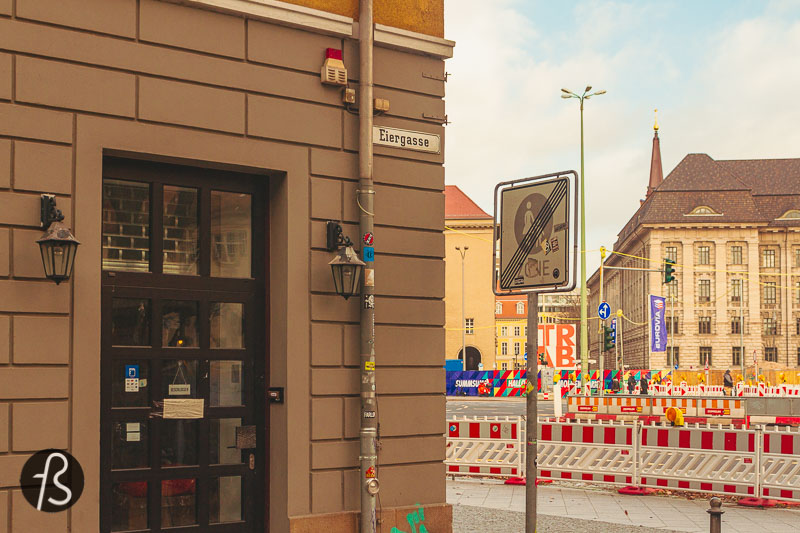
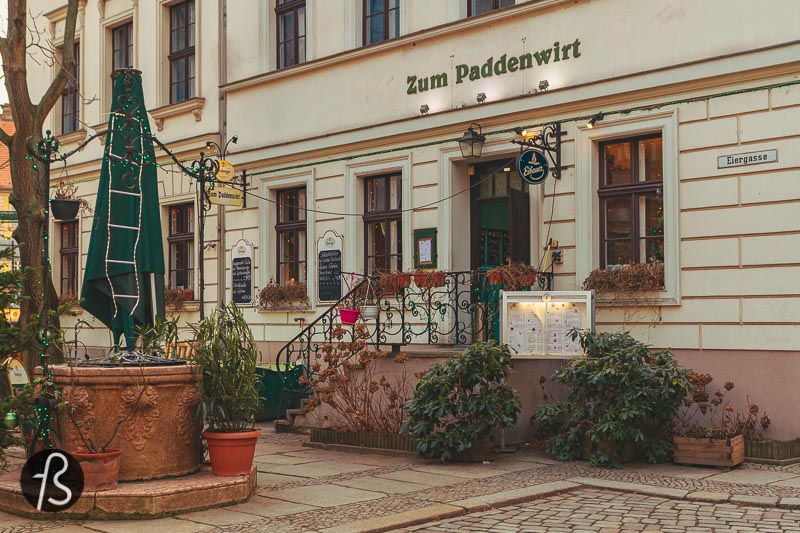
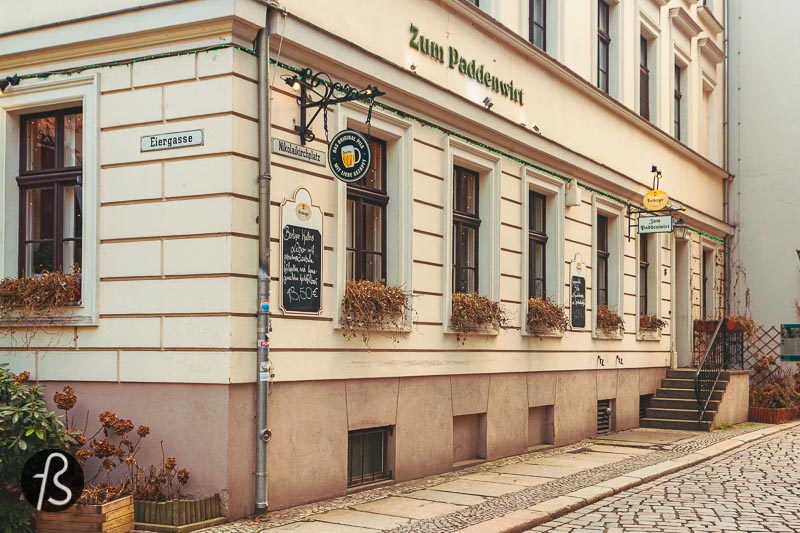
Berlin’s shortest street today
Today, the shortest street in Berlin is home to a book and antique shop where you can get many different city maps as old as the neighborhood.
Across the street, a German restaurant serves traditional Berlin dishes and has a fun story for its name. Called Zum Paddenwirt, the legend says that, back in the 1800s, a lazy worker decided to bring a beer barrel from a delivery ship on the Spree to the restaurant. Due to lack of proper transport, it broke down. There was beer everywhere and, overnight, the smell of it attracted thousands of frogs. In Berlin at the time, frogs were called Padden, and this is how the restaurant got its name.
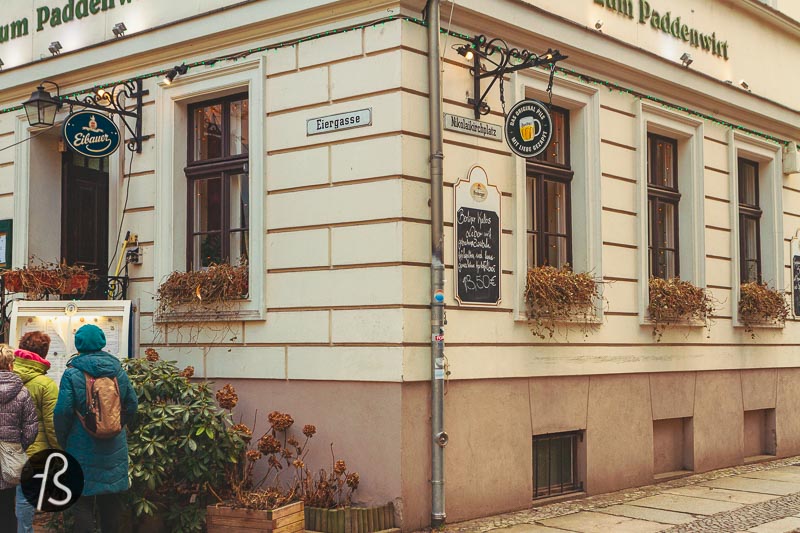
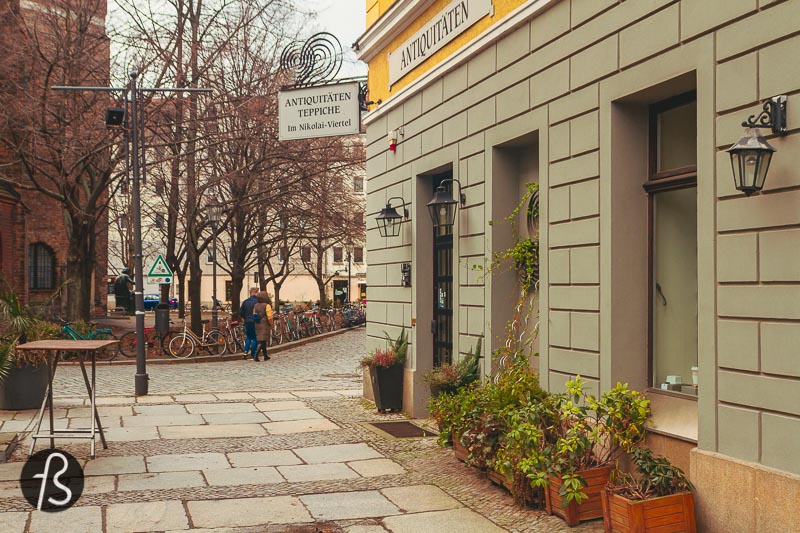
Whenever you are in this part of town, don’t forget to go take a look at Berlin’s shortest street. But keep an eye for the street names and open a map app on your phone since the Eiergasse is so small that you might even miss it.
The Eiergasse can be found in the medieval quarter of Berlin, right next to Alexanderplatz. In Nikolaiviertel, it is located across from Berlin’s oldest church. As with everything around the area, it changed after the Second World War as you can see from the ruins of the Franziskaner-Klosterkirche and the old Berlin wall.
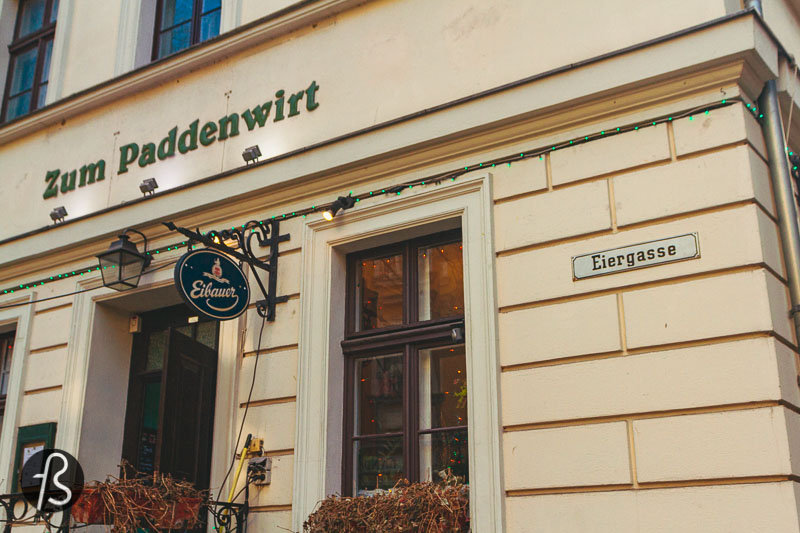
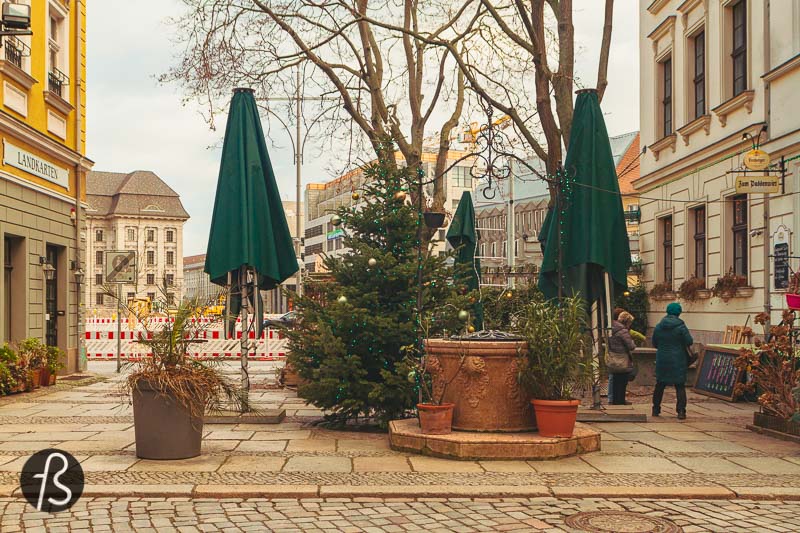
Exploring the Eiergasse: Berlin’s shortest street
Eiergasse
10178 Berlin